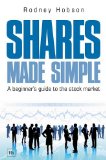Difference Between Class A and Class B Shares
When buying mutual funds from a broker, or another investment professional, you may find yourself having to choose between different mutual fund classes. These classes differ in the aspects of their expense amount, and how much the broker will charge for selling you the fund. Each company is different, therefore, pay close attention to the comments of the company in connection with their class A and class B shares. Although, basically speaking, the class B shares have less or no voting rights in the company, and no rights for repayment, should the company terminate its services.
Some companies issue two classes of shares when they are looking for publicity. The class A share, in this case, will move for the public, and is termed as the ‘common stock’. It will comprise of a single vote for each share. The class B shares are completely dependant on the company, as to whether or not they will be published. These shares could offer as much as ten votes for each share, and offer shareholders the guarantee of retaining control over the concerned company.
It is not always the case that class A shares hold less voting rights than class B shares. Sometimes, class A shares can even carry more voting rights than class B shares. Be aware that there are certain companies who try to disguise any disadvantages that may be associated with having shares, and offer fewer rights for class A shares, but more for the class B shares. For example, if the class A shares have five voting rights, then the class B shares may have one voting right, or visa versa. This is why its important to analyze the potential company’s bylaws and charter, to gain extra insight, and details, pertaining to these issues.
What happens if you purchase class A shares?
Class A shares can have extra charges, such as those charged for front-end sales . In the case of pre-determined sales charges, you will be investing a part of your money. You may even find that the sales charges are based on, and determined by, the amount of assets that you possess. However, these charges are generally less than the charges imposed by other share classes.
What happens if you purchase class B shares?
Class B shares do not have front-end sales charges. Their charges are based on the value of your assets, and are generally higher than those of other share classes. Usually, class B shares enforce a conditional delayed sales charge, which must be paid within a determined time period, after selling your shares. Due to these reasons, class B shares are often referred to as ‘no-load’ shares.
Summary of differences between the share classes:
1.Unlike shares of class A, class B shares do not have any sales charges when they are bought.
2.When purchasing class A shares, most of your money will be immediately invested.
3.The annual expenditure of class B shares are higher. This is calculated on the basis of expense ratio.
4.When selling class B shares, there may be sales charges.
- Difference Between Revolutionist and Terrorist - April 4, 2010
- Difference Between Diamonds and Pearls - April 2, 2010
- Difference Between Canon FS11 and Canon FS21 - April 2, 2010

